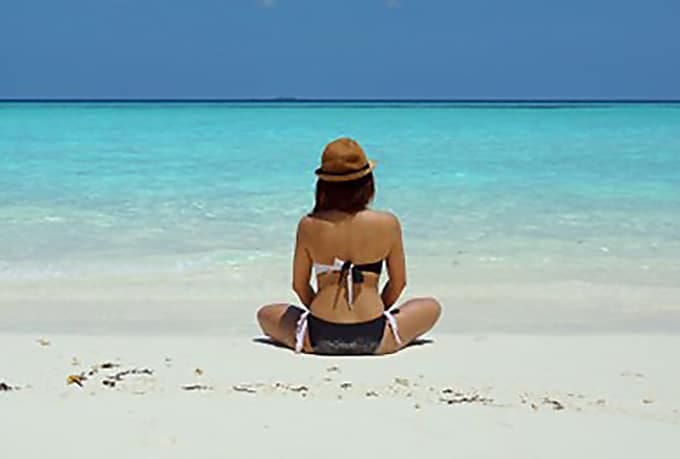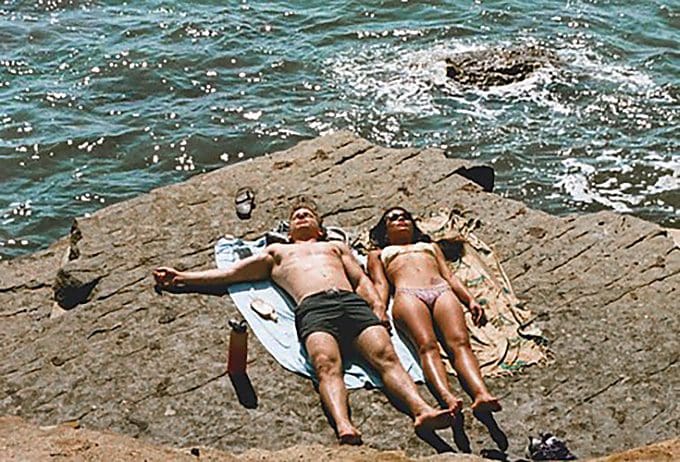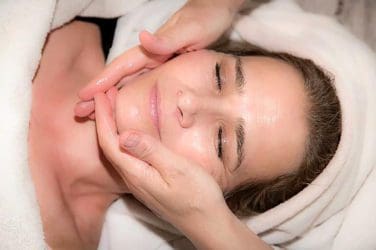words Alexa Wang
If you are looking for an instant, ready-to-go to-the-beach type of tanned skin, you’ll probably wonder why the process is taking a while.
Tanning is a process that has its perks but also comes with risks if done incorrectly.
Here are some things that can shed light on what goes into tanning, like UV light, melanin, ways to speed up tanning, and even tanning underwater.

Sun and UV light
Ultraviolet light (UV) is your main source of getting that tan. It is what causes melanin to form and makes your skin tanner.
However, this type of light is dangerous when exposed to it too much. It has many dangerous side effects, like sunburn and skin cancer.
With this in mind, the process should be done with extra care and consideration. Your health is very important and should never be compromised.
When you go for a sun tan, do not go outside from 10:00am to 4:00pm. These are the peak hours of the sun. This is when the sun is at its hottest, and the UV rays are at their strongest.
This is important for you not to do things that can harm your skin.
Melanin
Melanin is responsible for making your eyes, hair, and skin darker.
Melanin also has health benefits. It protects us from harmful UV rays to ensure that the cells in our bodies are protected.
One thing you have to keep in mind is the differing levels of melanin. Not everyone has the same level of melanin. People with darker skin tones produce more melanin than those with lighter skin tones.
This makes people with darker skin tones tan quicker.
Other Factors That Get Into Tanning
If you are going to do sun tanning, then there are three things to consider.
First is the weather. Hot climates typically make for a faster tanning process. You’re going to have a hard time getting a tan if you decide to do it in the middle of the winter season.
Besides hot weather, humid climates also affect the speed at which the tan happens. Humid climates have moist air, which keeps your tan from fading.
The next thing to remember is the position of the sun. If you are closer to the equator, the tanning process should be quicker than if you are further away.
Even if you live far from the equator, you still shouldn’t risk getting a tan during peak hours. Though the sun might not be as strong as in tropical areas, UV rays are still strong during those hours.
Some Ways To Speed Up The Process
With all this in mind, is it possible to tan faster without damaging your skin?
Luckily, there are some methods you can do to safely speed up the tanning process.
Check the sun
The best time to go outside is any time past the peak hours. The challenge here is making sure the sun is still present and strong enough to tan your skin.
Early in the morning should be an ideal time. The sun’s rays are present but not harmful, which makes it perfect for tanning.
Changing positions

This is more of a safety precaution but can also speed up the process.
You don’t want to expose a portion of your skin to the sun. Not only will this leave the other parts of your skin untanned, making the result look awkward, but you will also run the risk of having sunburn.
Switch up from time to time to even out the tan all over the body. Bring a timer with you to help keep track of when to switch from the front to the back or vice versa.
Beta Carotene
Beta carotene is known for helping in the melanin production process by increasing it.
This compound has vitamin A, which is responsible for increased melanin production. Not only that, but it also mitigates the harsh effects of UV rays.
Foods that contain beta carotene are typically vegetables like carrots and squash. Eating them before your tanning session can help speed up the tanning process.
Other vegetables with beta carotene that are viable to eat are radishes and spinach.
Underwater Tanning
You might be skeptical when you hear about underwater tanning. Is it possible to tan underwater? And is it as effective as tanning regularly?
To answer the first question, yes. It is possible to tan underwater.
When light hits the surface of water, it gets absorbed. However, the absorption is not 100%.
Light is still able to pass through water, making it possible for you to get a tan or get sunburned.
This is most likely to happen in clear waters like swimming pools. This is because there is nothing stopping the light from penetrating beneath the water’s surface.
The same cannot be said about murkier waters though, as light can hit the mud and debris usually present in these types of water. Besides, you’re probably not thinking of going for a tan around those areas either.
So you might be asking “since there isn’t that much light in the water compared to outdoor sun tanning, do I still need sunscreen?”
The answer is still yes. Light is still present in water.
Wait for thirty minutes before heading into the pool for sunscreen to coat itself in your skin fully. This is especially true since you will be surrounded by water.
If you go in too early, the water can easily wash away the sunscreen, making you less safe from harsh UV rays.
Now is it quicker than sun tanning?
I would say it’s a bit safer. Since there are less UV rays present due to absorption, it is a bit safer to tan underwater. Still, it is better to always take precautions like applying sunscreen.
If you want it to be quicker, then the best place to do it is at the beach. This is because the air is more humid there, which makes the tanning process quicker.
Not only are you slightly more protected from harsh UV rays, but you are also ensuring a faster tanning session thanks to the climate.
Frequently Asked Questions
Are there other foods that can help with the tanning process?
Other foods that help with the tanning process include watermelon and red peppers.
Is tanning in the afternoon slower than in the morning?
The intensity of the sun in the afternoon is not so different compared to the morning. It will not be as strong as the peak hours which is what you want to avoid.
It will depend on whether or not the sun is still shining during the late afternoon hours.
Will wearing darker clothes speed up the process?
Wearing dark clothes like black will not increase the speed.
Darker colors absorb heat, not light. Heat is an indicator that there is more sunlight present, but it does not guarantee faster tanning.
Conclusion
Don’t worry if you feel as though the tan is taking a while. Considering the risks that it can lead to, it is always best to err on the side of caution.
Luckily, there are ways you can speed up the process all while keeping safe. Whether you are in or out of water, always remember to have a nice and safe tan.



















